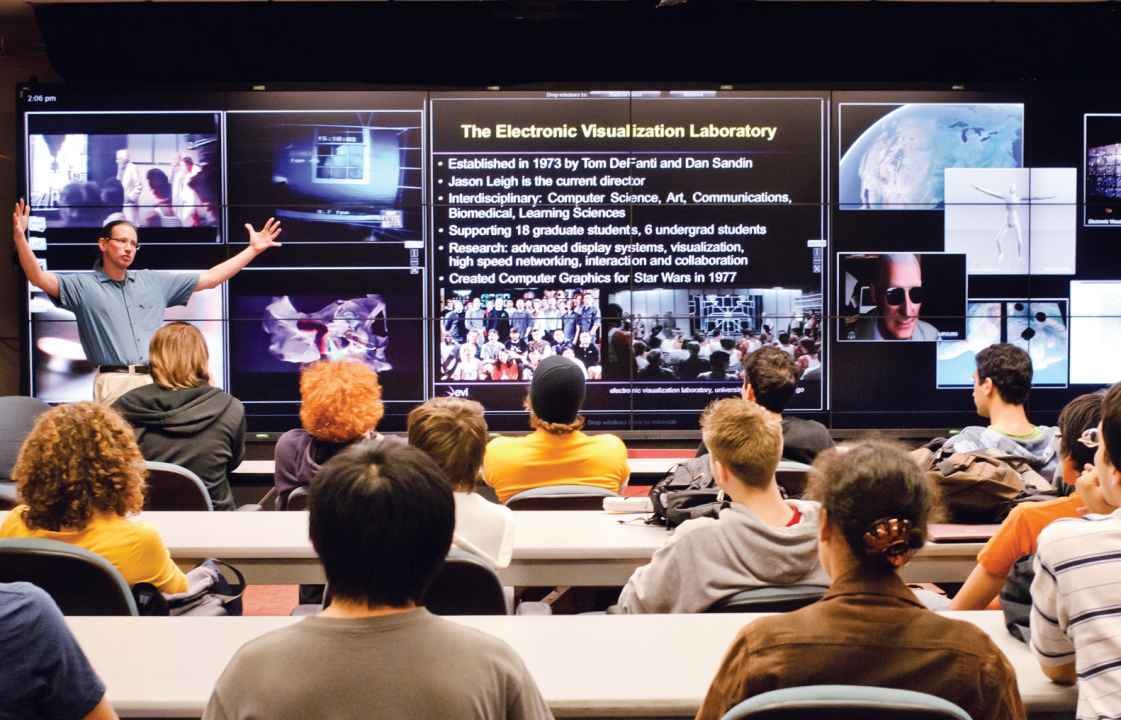|
|
||||||||||||||||||
Discoveries Channeled: Celebrating 30 Years of UIC
UIC Alumni Magazine
EDITOR’S NOTE: The “UIC Alumni Magazine” Winter 2012 publication features a review of some of the leading innovations UIC forged in the past 30 years. The article cites the 1982 merger of the University of Illinois at Chicago Circle and the University of Illinois Medical Center as creating a new paradigm, one facilitating the free flow of research from faculty to physicians, researchers to end users, and back again. While the UIC Electronic Visualization Laboratory (EVL) began innovating long before that - it was founded on interdisciplinary collaboration between the sciences and arts in 1973 - the article goes on to recognize one of EVL’s major achievements in the past 30 years: “UIC has played a critical role in virtual reality development. Its CAVE automatic virtual environment is used to analyze everything from molecules to car designs.” Here is an excerpt from the article: The issue was comfort, or rather, the lack of it. To enter the virtual world of the early 1990s, users first had to don cumbersome helmets. Along with his colleagues, Thomas A. DeFanti, director emeritus of UIC’s Electronic Visualization Laboratory, “decided to turn the problem inside out,” recalls current EVL Director Jason Leigh phd ’98 eng, then a Ph.D. student in the College of Engineering’s Computer Science Department. “Rather than project images through head gear, we decided to project them on walls.” The resulting CAVE automatic virtual environment, essentially a room-sized cube within a larger room, directed projectors at several walls to create an experience akin to “visiting the Grand Canyon rather than looking at a photo of it,” says Leigh, adding that CAVE’s eyewear not only proved lighter, but more immersive. “Earlier eyewear tended to block peripheral vision,” he says. “Ours didn’t.” When it debuted in 1992, its impact was immediate. Users could see images that appeared to float on air. They could walk around an image and view it from different vantage points. Then came General Motors, which wanted to design cars with it. “You could simulate the experience of sitting in a car, how it felt with a larger dashboard, then a smaller one, or a more prominent steering wheel, then a less prominent one,” says Leigh. In October 2012, EVL launched CAVE2, which combines virtual reality and scalable-resolution display walls at a resolution matching that of human acuity. To read the entire article, see the link to the PDF (right). Email: maxine@uic.edu Date: December 18, 2012 Document: UIC Alumni Magazine article |